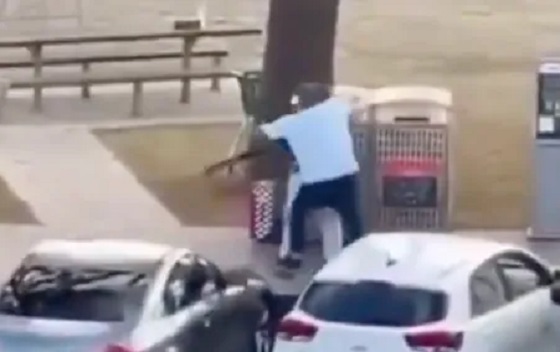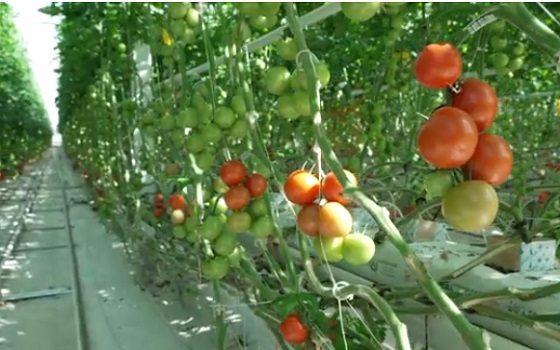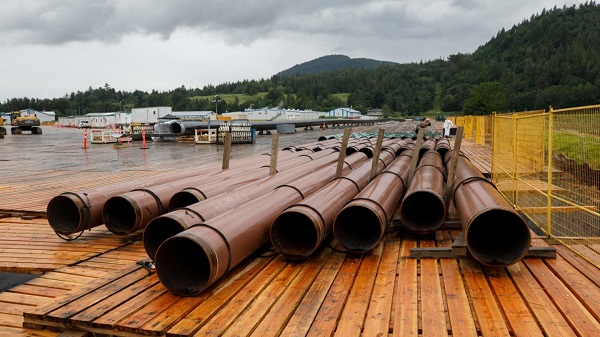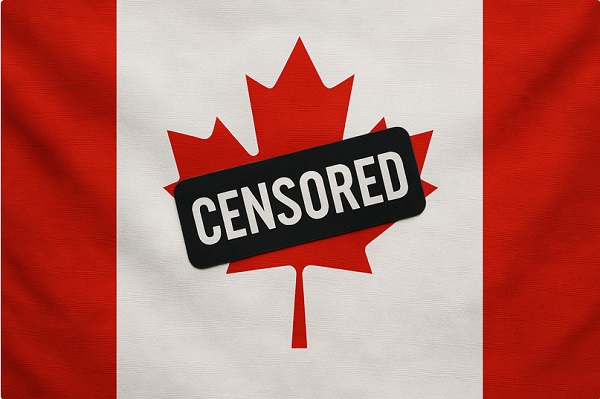
A former top U.S. Drug Enforcement Administration official has come forward with explosive allegations that Canadian authorities obstructed a high-level DEA investigation into a 42-kilogram carfentanil seizure tied to a 2018 mass shooting in Toronto and, according to senior U.S. investigators, potentially linked to Pakistani threat networks and Chinese chemical precursor suppliers.
The DEA learned, after 29-year-old Faisal Hussain’s shooting rampage on Danforth Avenue—which left two people dead and thirteen more wounded—that his brother and a network with Pakistani links were connected to a historic seizure of carfentanil, a synthetic opioid 100 times more potent than fentanyl, in September 2017. The drugs were discovered in a suburban Pickering home, alongside specialized equipment consistent with a transnational trafficking operation.
While ISIS’s claim of responsibility for Hussain’s attack initially raised concerns about terrorism, Canadian officials and Toronto police advanced a narrative that the tragedy had no national security implications, attributing it instead to the hardships of a Pakistani immigrant family and a mental health crisis. But the DEA’s elite Special Operations Division—drawing on global informant and intelligence networks—did not fully accept the conclusions of Canada’s investigation or its public disclosures.
The DEA had requested to test the seized carfentanil to determine whether its molecular structure matched opioids trafficked into Atlanta from Quebec, said Donald Im, the DEA’s former Special Operations Division lead on precursor chemicals, dark web drug markets, and narco-terrorism, in an exclusive interview with The Bureau.
Although mid-level RCMP officers were reportedly willing to share the seizure materials and investigative details with the DEA, Im said those efforts were blocked by senior Canadian bureaucrats.
“I coordinated with our DEA office up there in Ottawa, and he was getting the runaround as well,” Im said. “I’m saying, if you guys had some 30 or 40-odd kilograms, and you couldn’t give us a few grams to determine whether or not there were any similar seizures in the United States? And they wouldn’t give it to us.”
Im said that before retiring in 2022, he couldn’t let the case go, and attempted—through the Pentagon and U.S. intelligence agencies—to pressure Canadian authorities to release a sample. Those efforts also failed.
The DEA viewed the Toronto seizure as a potential inbound threat to Americans on multiple levels. According to DEA estimates, as little as 20 micrograms of carfentanil can be fatal to humans. At that potency, one kilogram of carfentanil could yield well over 10 million lethal doses. The 42 kilograms of confirmed carfentanil seized from the Pickering home—linked to Pakistani crime networks—could, in theory, be potent enough to deliver lethal doses to the entire populations of Canada and the United States.
“I could see the frustration in the RCMP guy’s face,” Im said, referring to the Canadian official he directly asked to share samples from the Pickering seizure. “I mean, there was this one guy—he was really good and he did everything he could to get us some stuff, but no—headquarters would not let him release anything,” Im recalled. “And I was told by RCMP officials—not just once, but on a number of occasions—they are frustrated at their headquarters.”
The Bureau confirmed with a current senior U.S. official, with knowledge of discussions involving Public Safety Canada and senior RCMP leaders, that American investigators have allegedly been repeatedly stonewalled on requests for information from the RCMP on fentanyl investigations, so-called ‘superlabs,’ and cross-province distribution networks in B.C., Ontario, and Quebec—cases in which DEA intelligence reportedly led to Canadian investigations.
Senior U.S. officials with direct knowledge of precursor tracking said the chemical compounds, dyes, and containment gear found at the scene in Pickering almost certainly originated in China, where state-tolerated chemical firms supply global narco-networks.
In a lengthy interview, Im—who has testified before Congress on Beijing’s role in global narcotics trafficking and traced fentanyl networks back to Chinese Communist Party officials—said the Toronto carfentanil case and its link to the Danforth shooting expose a growing national security blind spot in Canada, with direct implications for the United States.
He placed the 2017 seizure at the center of escalating U.S. concerns about Canada’s role in the fentanyl supply chain, declining enforcement standards, and Ottawa’s political resistance to RCMP cooperation with American law enforcement.
To date, most Canadian media have largely portrayed the shooter and his family as victims of personal tragedy. Faisal Hussain, the 29-year-old gunman, was said to have suffered from psychosis after his brother’s drug overdose left him in a vegetative state. In September 2017—while Fahad Hussain was in a coma—fire crews responded to a carbon monoxide alarm at the Pickering home and alerted police to a suspicious substance in the basement. Durham Regional Police executed a search warrant, uncovering 33 illegal overcapacity firearms magazines and 53 kilograms of seized material—including 42 kilograms of confirmed carfentanil—the largest known seizure of the drug in Canadian history.
The home’s owner, Pakistani immigrant Maisum Ansari, was convicted and sentenced to 20 years in prison for possession of 33 firearms and 26 kilograms of carfentanil for the purpose of trafficking. He was released on bail in September 2023 pending appeal. The ruling that freed Ansari stated: “The Crown’s theory at trial was that the appellant was not necessarily the mastermind behind the criminal enterprise, but he was a ‘necessary cog in a larger operation.’”
Speaking about the Faisal Hussain shooting case, Liberal Public Safety Minister Ralph Goodale publicly stated there was “no national security connection between this individual and any other national security issue.”
ISIS claimed responsibility for the Danforth shooting through its AMAQ news agency, describing Hussain as “a soldier of the Islamic State.” Canadian law enforcement dismissed the claim, and then–Toronto Police Chief Mark Saunders said no evidence supported it. But Im said the DEA remained concerned.
“Not only did we assume there were links to China, but then we found links back to Pakistan. And I can’t disclose exactly what, but it’s bad,” Im said. “And we were thinking: is this going to be a potential terrorist act? This is where we believed the RCMP didn’t want anything like that to be disclosed—that there was a potential ISIS sympathizer attempting to use carfentanil as a weapon of mass destruction, as opposed to just killing somebody with a pistol.”
In wide-ranging answers that will inform a forthcoming series from The Bureau on Canada’s role in China’s global fentanyl supply networks, Im reiterated that certain details remain classified. However, he said The Bureau’s reporting has already touched on many of the key issues that senior U.S. officials believe the North American public must understand—especially regarding the intersection of narcotics, national security, and foreign interference from hostile states.
Asked to elaborate on the DEA’s view of the Hussain case and its links to Pakistan, Im said:
“Terror networks. It was indirect links, but we needed to follow through with it. We found links to him—and then back to Pakistan.”
Pressing the point, The Bureau asked: “You’re saying what you can share is limited, but there was something that concerned you there in Pakistan?”
“Yes, indirectly, and I won’t say anything further,” Im responded.
Despite escalating efforts through intelligence and defense channels, Im said Canada remained uncooperative.
“We were asking: How does a Pakistani Canadian have all this amount of carfentanil? And it was a staggering amount,” Im said.
What also went unreported, Im noted, was that the brother had overdosed after handling a large quantity of carfentanil—alongside food dyes and chemical-handling gear that suggested commercial production or distribution.
The DEA believed the setup bore the hallmarks of mass trafficking operations or, in a more alarming scenario, possible preparation for a terror-related attack.
“The local police gave us photos and we found food dye coloring. And we were like, what is he doing with this? We think he was trying to market the product to youth with different color variants, but he wasn’t able to do it.”
“So that’s why we were trying to, one, trace the source of the carfentanil and the chemicals, the food dye coloring. And then, was he communicating with anyone in the name of ISIS?”
“But who actually supplied it to him, and how did he get it? It’s got to come from China. But the RCMP wouldn’t give us anything. We couldn’t even get samples to analyze. This was one of my key priorities in 2018 and 2019. They wouldn’t give it to our lab. We just needed a small amount to determine the molecular structure—whether we could trace it or link it to seizures in the States.”
Im also tied the DEA’s blocked Danforth probe to broader concerns about carfentanil exports from Canada. “DEA Georgia, Atlanta had been investigating carfentanil overdoses, and guess who the supplier was? A Canadian named Arden McCann. He had been selling carfentanil through the dark web, and we were wondering—the Mexicans aren’t selling carfentanil, but we’re seeing it coming out of Canada,” Im said.
A current senior U.S. official with direct knowledge of bilateral tensions confirmed that many of Im’s concerns reflect long-standing frustrations. The official said American authorities believe Canada has consistently downplayed cartel infiltration—an issue that escalated after the Trudeau government lifted visa requirements for Mexican nationals.
The official also pointed to Canada’s expanding role in the poly-drug trade—dominated by Chinese organized crime—including fentanyl, methamphetamine, and illicit cannabis. Since the 2018 legalization of recreational marijuana, Canadian supply chains that appear “legal” on paper have increasingly fueled the U.S. black market, the official said.
Once across the border, those shipments merge with synthetic drug flows fueled by Chinese precursors. The resulting profits are laundered through vast trade-based networks controlled by Chinese organized crime groups. These networks operate in tandem with underground banking systems in the Middle East and move money for Latin American cartels, Italian mafias, and other transnational syndicates.
Tensions between the RCMP and U.S. agencies have deepened in recent years. One emblematic episode, according to a U.S. source, came when the Canada Border Services Agency publicly acknowledged that Canada was a fentanyl exporter. The RCMP contradicted the statement, and the admission was quietly withdrawn. “We’re just saying, give us something honest to work with,” a U.S. official said.
As of 2025, the mistrust remains unresolved. The official pointed to recent RCMP claims that none of the fentanyl seized in a series of Vancouver-area lab busts was destined for the United States. “We asked how they knew that,” the official said. “They won’t share the evidence.”
It’s the same pattern Washington has grown increasingly frustrated with—mirroring what Don Im described facing during the carfentanil investigation. In fact, intelligence on fentanyl labs has largely flowed in one direction: from the DEA to Canadian authorities.
Im emphasized that frontline RCMP officers are not to blame. “They’re more than capable,” he said. “But they are politically hamstrung in their ability to share and coordinate. That’s coming from headquarters.”
Looking ahead, Im warned that Canada’s continued resistance to serious fentanyl cooperation could carry long-term economic consequences. “If Mark Carney wants to stay in power, this is where Trump can come in and say: start coordinating with us on the Chinese—or the tariffs stay,” he said.
Im, who has testified before Congress on China’s role in the fentanyl crisis and helped write the groundbreaking 2024 Congressional report on the CCP’s involvement in supporting and subsidizing precursor chemicals, said endemic corruption in China’s provinces has allowed chemical producers to flood North America with precursors. The report found fentanyl being produced in some Chinese prisons, and some CCP officials holding so-called “golden shares” in precursor companies. He identified Canada as a critical conduit in that global system—serving both as a staging ground for drug production and a platform for laundering the proceeds.
“There is insufficient cooperation from Canada on fentanyl, Chinese organized crime, and money laundering with the United States,” Im said.
Im said he is speaking boldly now because lives are being lost across North America, and the political and judicial response so far has been woefully inadequate—in the United States, but especially so in Canada.
“I see it on the global scale here, including the United States, and it’s frustrating because now we’re slowly seeing U.S. government officials discussing Canada. And I’ve been saying all along that there’s an extensive amount of fentanyl and carfentanil that have been coming from Canada for years. And just because there’s only been a few seized does not mean that there’s not a significant amount,” he said.
“And I’ve worked with the RCMP for years, and they’re great until they’re influenced by the Chinese. It was just overwhelming. And we just couldn’t get anything out of RCMP anymore because their headquarters were restricted in providing what we needed. So I mean, they’d give us low-hanging fruit information, but when it came to money and Chinese and fentanyl and chemicals, they were like, ‘No.’ We tried but couldn’t get that information.”
Coming Up: Subscribe to The Bureau for exclusive, paywalled investigations that delve into the intelligence and evidence shaping U.S.–Canada relations. Our upcoming reports expose the rise of Canadian super-labs, Beijing’s United Front Work Department, the covert use of cross-border properties, and growing threats to national security—and lives—across North America. These stories are poised to influence high-level tariff negotiations between Washington and Ottawa.
The Bureau is a reader-supported publication.
To receive new posts and support my work, consider becoming a free or paid subscriber.
Invite your friends and earn rewards
If you enjoy The Bureau, share it with your friends and earn rewards when they subscribe.
Invite Friends
Related

















